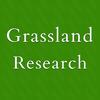博文
Grassland Research | 气候和人类活动驱动了蒙古高原草地一年生和多年生C4植物多度的变化
||
Grassland Research | 气候和人类活动驱动了蒙古高原草地一年生和多年生C4植物多度的变化
Grassland Research草业科学领域国际学术期刊


导读
在过去的几个世纪,区域变暖使得蒙古高原草地C4植物大幅增加。但一年生和多年生C4植物多度的时空变化格局仍然不清楚。中国科学院植物研究所白永飞团队联合慕尼黑工业大学杨浩课题组借助在蒙古高原280个地点、历时9年的植物群落调查数据,来解析一年生和多年生C4植物的时空变化格局和驱动因子。
结果发现:一年生C4植物主要分布在44° N度区域,呈东西条带分布,趋向于向北纬(约0.5°)和东部高海拔地区蔓延。一年生C4植物多度逐年减少,而多年生C4植物多度逐年增加。研究还发现,C4植物时空格局主要受控于温度升高、年际降水波动和这两种生活型植物动态变化。一年生C4植物在正常和湿润年份有竞争优势,而多年生C4植物在干旱年份有竞争优势。放牧增加了一年生C4植物多度,但对多年生C4植物没有影响。该工作强调,在研究C3和C4植物占主导草原的结构和功能时考虑一年生和多年生C4植物之间竞争的必要性,为研究C4植物响应气候变化和人类活动提供了新的见解。
图表
Table 1. Frequency of occurrence and life forms of C4 species across the 280 sampling sites
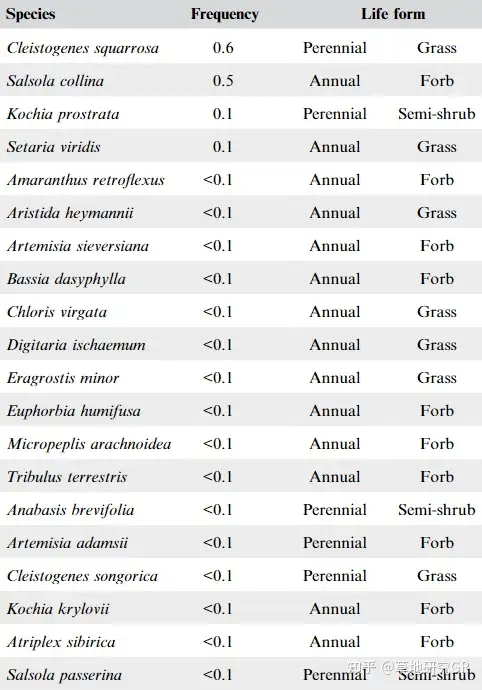
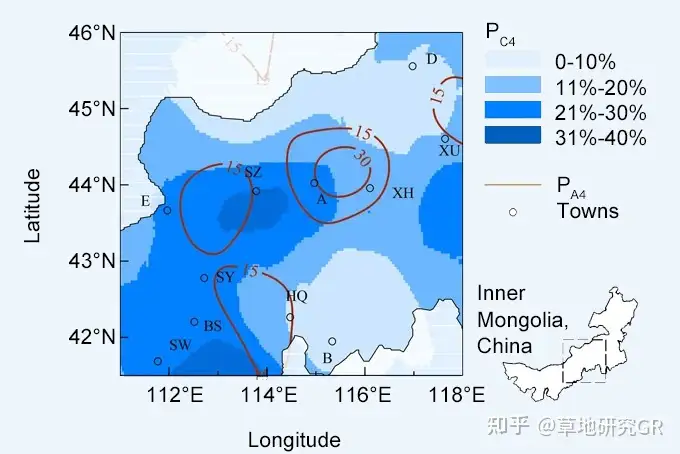
Figure 1: Isolines of 15% and 30% for the regional relative biomass of C4 annuals (PA4); the mean krige standard deviation for the study area is 9%. The blue color denotes the regional relative biomass of C4 plants (PC4). PC4 estimated for recent vegetation is taken from Auerswald et al. (2009); the mean krige standard deviation is 9%. Towns are A, Abag Qi; B, Baochang; BS, Bayan Sum; D, Dong Ujimqin Qi; E, Erenhot; HQ, Xianghuang Qi; SW, Siziwang Qi; SY, Sonid Youqi; SZ, Sonid Zuoqi; XH, Xilinhot; XU, Xi Ujimqin Qi.
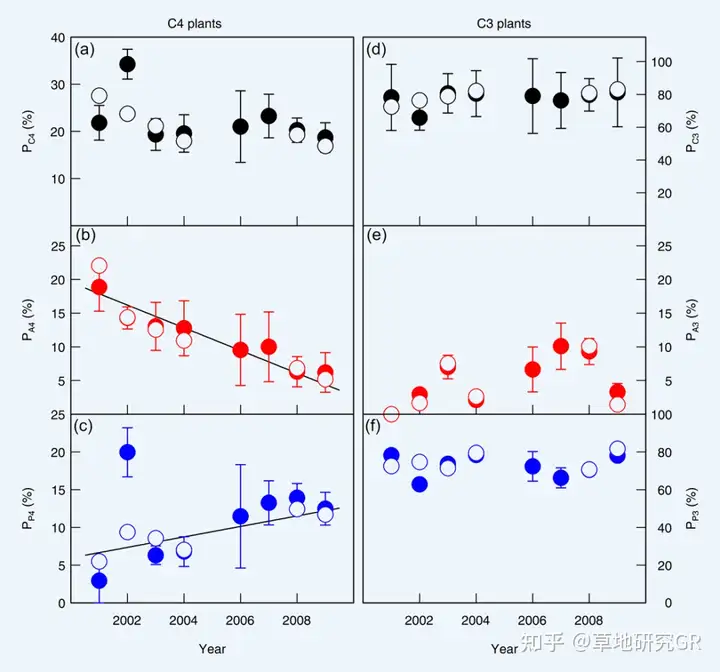
Figure 2: Variations in the relative biomass of C4 (PC4) and C3 (PC3) plants during 2001–2009. PC4 is further divided into C4 annuals (PA4) and C4 perennials (PP4), and PC3 is divided into C3 annuals (PA3) and C3 perennials (PP3). Each filled circle is the average of all field sites within each year. The number of sites is 15 in 2001, 75 in 2002, 45 in 2003, 33 in 2004, 12 in 2006, 20 in 2007, 65 in 2008, and 15 in 2009. The open circles denote a small area (see text) sampled in most years (the number of sites varies between 8 in 2001 and 60 in 2008). Error bars denote standard errors (SEs). Regression lines are for the open circles (PA4: R2 = 0.84, p = 0.010; PP4: R2 = 0.73, p = 0.032). For clarity, SEs are only given for the entire study area. For the small area, they are slightly larger (overall mean SE = 1.2%).
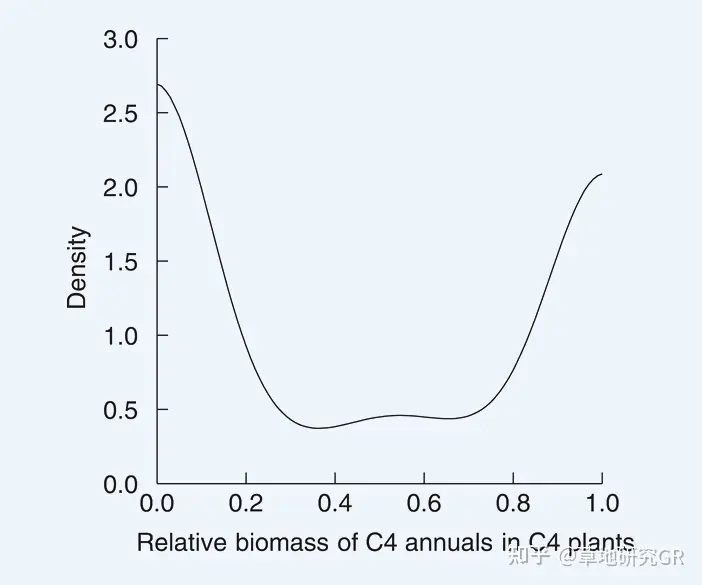
Figure 3: Density distribution of the relative biomass of C4 annuals in C4 plants. The integral density is 1.
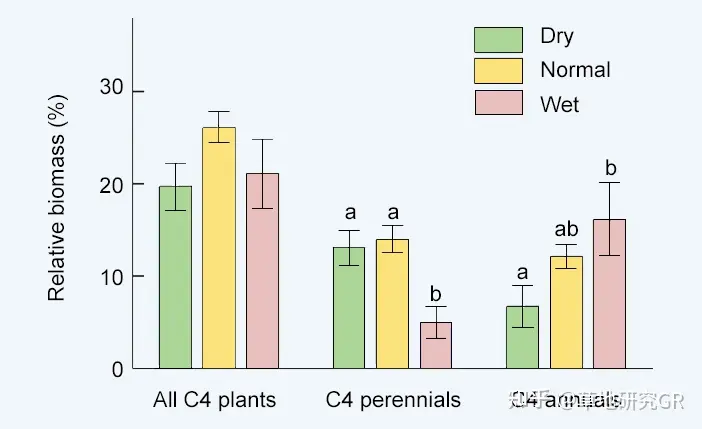
Figure 4: Responses of the relative biomass of all C4 plants, C4 annuals, and C4 perennials to wetness of the growing season. Dry, normal, and wet years were classified by the SPEI-4 values for August in the sampling year. Error bars denote SE. For each group, different letters indicate significant differences at p < 0.05.
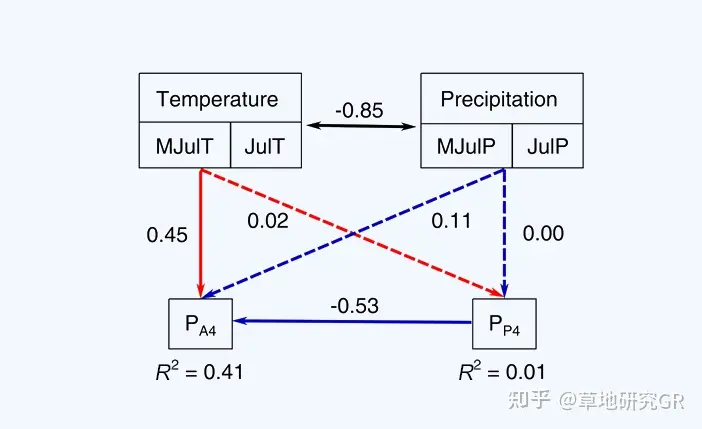
Figure 5: Structural equation modeling (SEM) analysis examining the effect of temperature, precipitation, and C4 perennials (PP4) on the relative biomass of C4 annuals (PA4). The initial constructed model of the SEM is explained in the Supporting Information: Figure S1). Square boxes indicate the variables included in the model. Results of model fitting: χ2 = 5.483, p = 0.241, df = 4, N = 267. (Note that high p values associated with χ2 tests indicate good model fit to data, that is, no significant discrepancies). Solid arrows connecting the boxes indicate significant positive and negative effects (p < 0.05), respectively; the pathways without significant effects are indicated by broken lines (p > 0.05). r2 values associated with response variables indicate the proportion of variation explained by relationships with other variables. Values associated with solid arrows represent standardized path coefficients. JulP, current year July precipitation; JulT, current year July temperature; MJulP, mean July precipitation; MJulT, mean July temperature; PA4, C4 annuals; PP4, C4 perennials.
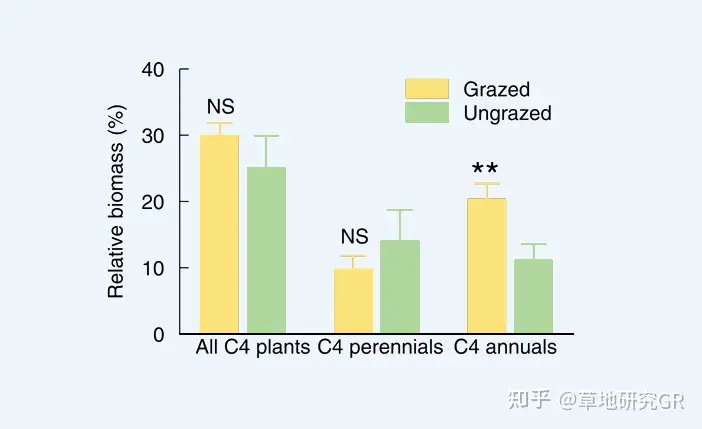
Figure 6:Responses of the relative biomass of all C4 plants, C4 annuals, and C4 perennials to grazing. Each value is the average of the relative biomass of recently grazed (N = 32) or ungrazed sites (N = 32). Error bars denote SE. NS represents no significant difference within a group (p > 0.05).

扫码查看原文
原文链接:https://onlinelibrary.wiley.com/doi/10.1002/glr2.12019
内容来源:Grassland Research(草地研究)第1卷第2期(投稿:2022-03-06;接收:2022-05-17;刊发:2022-07-01)
DOI:https://doi.org/10.1002/glr2.12019
引用格式:Yang, H., Auerswald, K.,Gong, X., Schnyder, H., & Bai, Y. (2022). Climate and anthropogenic drivers of changes in abundance of C4 annuals and perennials in grasslands on the Mongolian Plateau. Grassland Research, 1(2),131–141.
文章信息编译者:井新 兰州大学草地农业科技学院 教授
说明:该文仅代表编译者对论文的理解,如需参考和引用相关内容,请查阅原文。
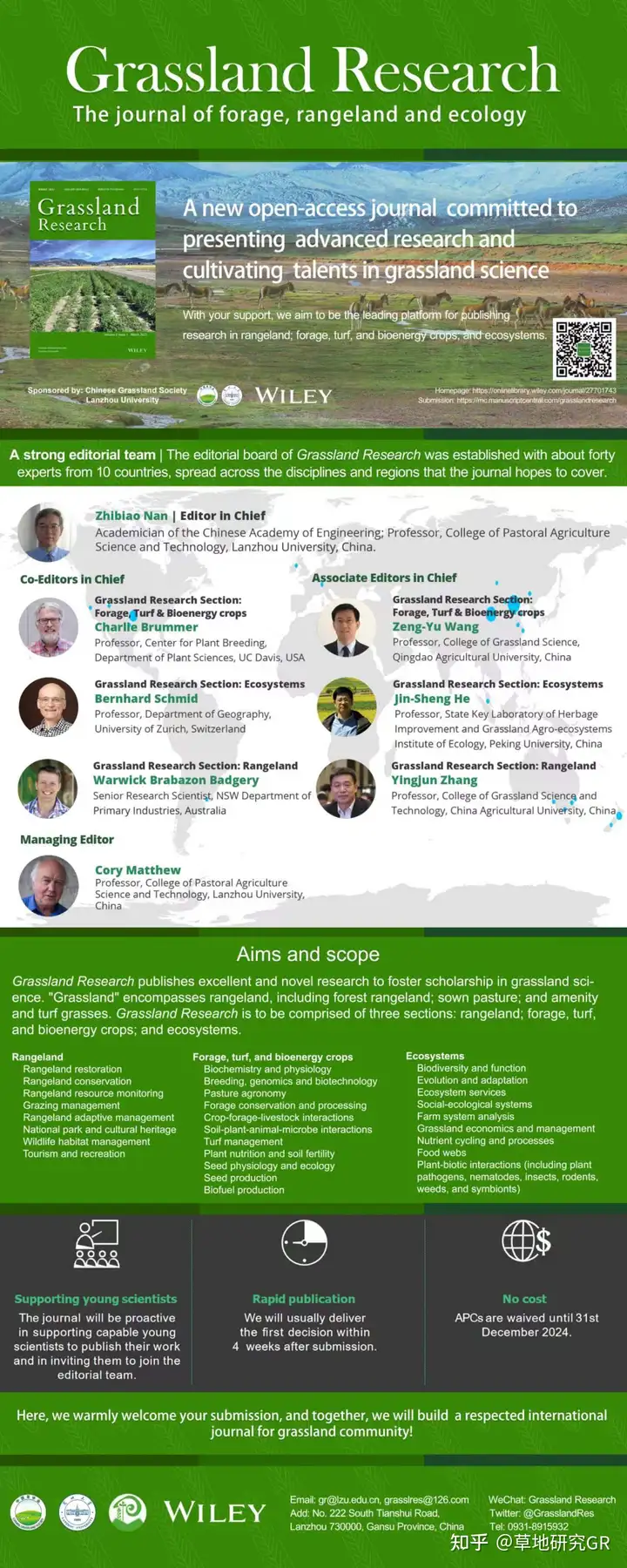
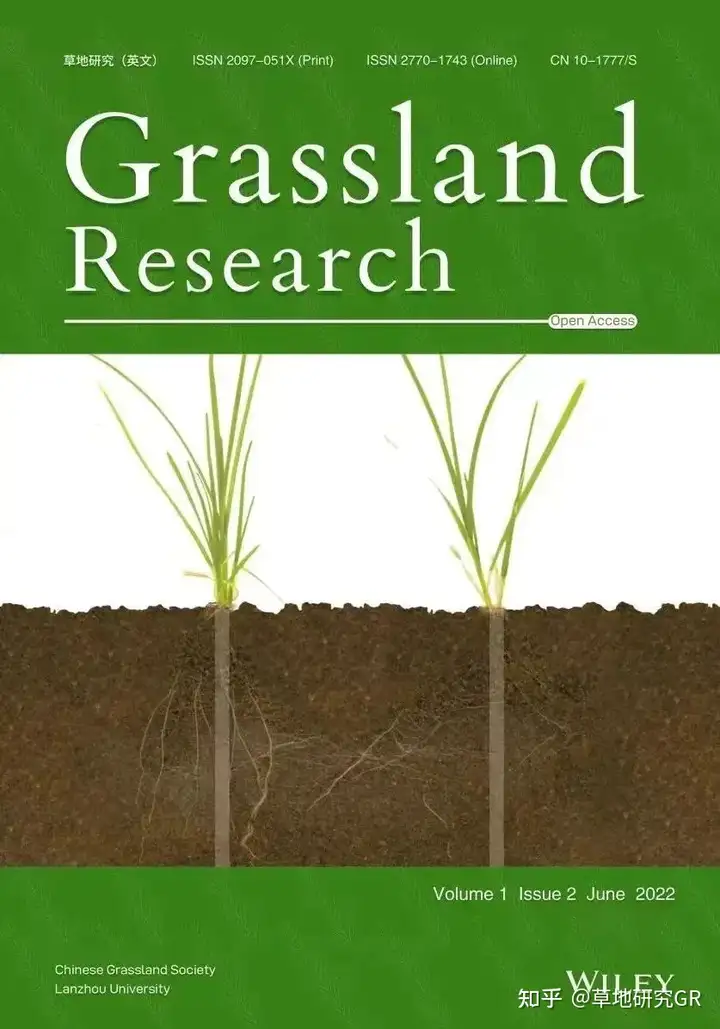
期刊介绍
Grassland Research是我国草业科学领域第一本国际学术期刊,季刊,由中国草学会和兰州大学共同主办。该刊受中国科技期刊卓越计划高起点新刊项目支持,由国际出版集团John Wiley & Sons Australia, Ltd.提供出版及宣传服务,于2022年正式创刊。
Grassland Research论文刊发范围广,综合性强。从分子到全球变化层面,全维度聚焦草业科学及其在人类可持续发展中的作用。期刊将刊登天然草原,栽培草地、草坪和生物能源作物,以及草地生态系统三大板块的基础性和应用性研究成果、综述、论点等类型的文章。优先考虑发表青年学者优秀研究成果,期待成为青年科学家喜爱的国际学术交流主阵地。
在创刊前三年,Grassland Research将免收版面费,以OA形式通过全球化出版平台Wiley Online Library出版。
排版 | 胡金花
执行编辑|王楚怡
审核|彭京伦 武艳培 王新宇
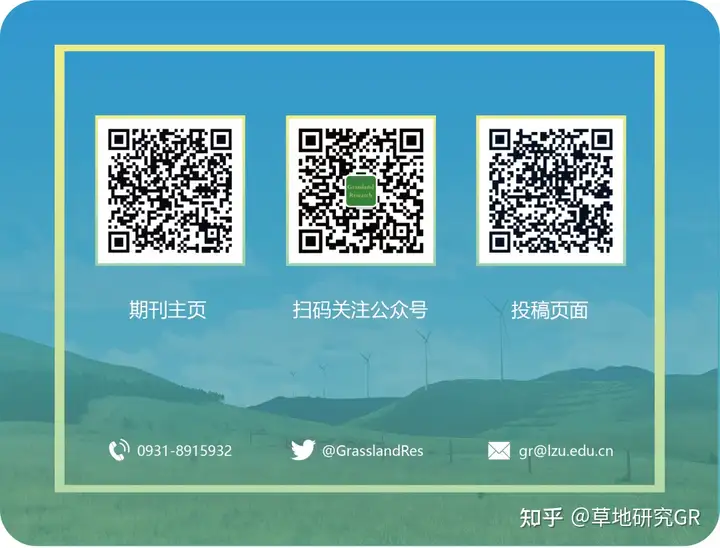
https://blog.sciencenet.cn/blog-3568995-1402652.html
上一篇:Grassland Research | 构建多样化、多年生、循环饲草系统,促进农业系统恢复力、生态系统服务和社会经济效
下一篇:Grassland Research | 理解绵羊放牧行为
